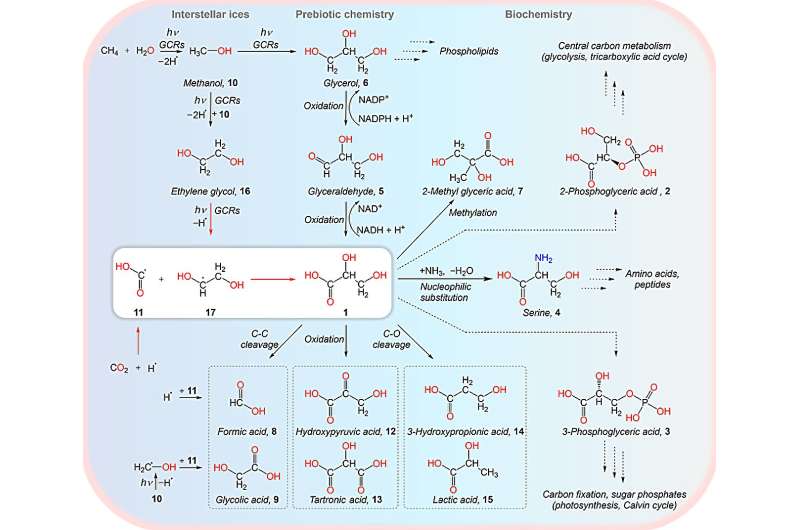In the vast expanse of the cosmos, amidst the frigid reaches of interstellar space, the seeds of life may be sown in the most unexpected of places. A groundbreaking discovery by researchers at the University of Hawaiʻi at Mānoa has unveiled a pivotal molecule for the metabolism of living organisms: glyceric acid. For the first time, this essential compound has been synthesized under extreme conditions resembling those found in the depths of space, marking a significant milestone in our quest to unravel the origins of life.
Published in the prestigious journal Science Advances, the research conducted by the UH Mānoa Department of Chemistry team, led by Professor Ralf I. Kaiser, along with postdoctoral fellows Jia Wang and Joshua H. Marks, in collaboration with computational chemist Professor Ryan C. Fortenberry from the University of Mississippi, delves into the intricate chemistry of cosmic environments. At temperatures as low as 10 Kelvin, akin to the icy realms of deep space, the researchers meticulously recreated the conditions necessary for glyceric acid synthesis on ice-coated nanoparticles.
Glyceric acid holds a pivotal role in the metabolic processes of living organisms, particularly in glycolysis—the fundamental pathway that converts food into energy. By elucidating the formation of glyceric acid in carbon dioxide-rich icy environments analogous to those found in outer space, the study sheds light on the potential origins of life-sustaining molecules beyond our planet.
Utilizing experiments with interstellar model ices and proxies of energetic Galactic Cosmic Rays at UH Mānoa’s W. M. Keck Research Laboratory in Astrochemistry, the researchers succeeded in synthesizing racemic glyceric acid. Through the innovative application of photo ionization lasers in the gas phase, the elusive molecules were detected—a remarkable feat with profound implications for astrochemistry and astrobiology.
These findings not only deepen our understanding of the chemical processes occurring in the vast expanses of space but also offer tantalizing insights into the potential for life beyond Earth. The detection of molecules like glyceric acid in space holds the promise of unraveling the cosmic origins of life and the interconnectedness of celestial chemistry with the very essence of life on Earth.
Professor Kaiser underscores the significance of these discoveries, highlighting the role of molecules like glyceric acid in the development of life-sustaining processes. He notes, “The study suggests that molecules like glyceric acid could have been synthesized in molecular clouds and possibly in star-forming regions prior to their delivery to Earth via comets or meteorites, thus contributing to the building blocks of life.”
Professor Fortenberry emphasizes the interdisciplinary nature of scientific inquiry, where experimentation and computational modeling converge to unlock the mysteries of the cosmos. “The potential presence of such molecules in space demonstrates the profound connection between the chemistry within our bodies and the chemistry of the universe,” he remarks. “Moreover, the synergy between experimental and computational approaches underscores the collaborative effort required to advance our understanding of the cosmos.”
As humanity continues to gaze skyward, probing the depths of space for clues to our cosmic origins, discoveries like the synthesis of glyceric acid serve as beacons of hope, illuminating the pathways that may lead us to unlock the secrets of life beyond Earth. In the quest to unravel the cosmic tapestry of existence, each revelation brings us one step closer to understanding our place in the universe and the remarkable journey that has led us to this moment of discovery.


